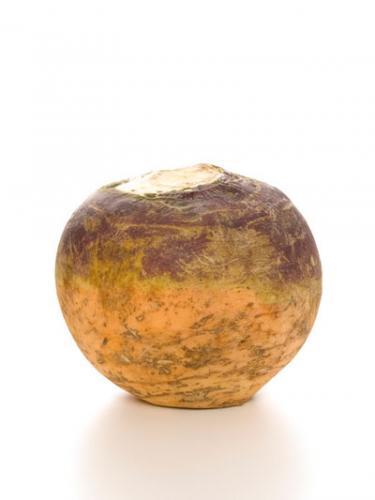
Michigan Fresh: Using, Storing, and Preserving Rutabagas (HNI52)
DOWNLOADJuly 22, 2023 - Katherine Hale and Kara Lynch, MSU Extension
This Document is offered in: English, Arabic Espanol,
Food Safety and Storage

- Pick or purchase rutabagas that are not bruised or damaged.
- Wash hands before and after handling fresh produce.
- Wash rutabagas under cool running water using a vegetable brush before peeling. Do not use soap.
- Look for smooth, firm vegetables with a round shape. Avoid rutabagas with punctures, deep cuts, cracks or signs of decay. They usually are trimmed of taproots and tops before they are sold to the public.
- Harvest when they reach the size of a softball. You may harvest rutabagas as they reach edible size and throughout the season since they will keep in the ground.
- Rutabagas will keep for months in a cool storage place. They store well in plastic bags in a refrigerator or cold cellar.
- Keep rutabagas away from raw meat and meat juices to prevent cross-contamination.
- For best quality and to preserve nutrients, preserve no more than your family can consume in one year.
Yield
|
1 medium = |
(2 to 3 lbs.) 5 cups cubed |
How to Preserve
Preparation: Select young, medium-sized rutabagas. Cut off tops, wash using cool water and a vegetable brush, and peel.
Rutabagas are best frozen. Michigan State University Extension does not recommend canning rutabagas as they usually discolor and develop a strong flavor.
Freezing
Cubed. Freeze by cutting into cubes and water blanch* for 3 minutes. Place in ice water for 3 minutes, drain and pack into freezer containers or freezer bags, leaving ½-inch headspace. Seal, label, date and freeze.
*Water blanching: Use 1 gallon of water per pound of rutabagas. Put rutabagas in blanching basket or strainer, and lower into boiling water. Place lid on pan or blancher. Return water to boil. Start counting blanching time as soon as water returns to a boil. If it takes longer than a minute to come back to a boil, too much rutabaga has been put in the boiling water.
Mashed: Cut into chunks and cook until tender in boiling water. Then drain, mash, cool and pack into freezer containers leaving ½-inch headspace. Label and place in freezer.
Recipes
Baked rutabagas
Place 1 to 3 pounds quartered and peeled rutabagas in a shallow baking dish. Cover and bake in a 350 °F oven until tender, usually 40 to 50 minutes. Mix with carrots and parsnips for a great fall bake.
Sources
- Andress, E., & Harrison, J. A. (2014). So easy to preserve (Bulletin 989). (6th ed.). University of Georgia Cooperative Extension.
- Center for Nutrition, Diet and Health. (n.d.). Rutabaga (Vol. 1, Number 12). University of the District of Columbia. http://files-do-not-link.udc.edu/docs/causes/online/ Rutabaga%2012.pdf
- Michigan State University Extension. (2023). How much should I buy? A guide to fresh fruits and vegetables for home cooking. https://www.canr.msu.edu/resources/how_ much_should_i_buy
- Smith, P., Shaughnessy, D., & Ballew, J. (2022, March 16). Turnips and rutabagas. Home & Garden Information Center. Clemson University, https://hgic.clemson.edu/ factsheet/turnips-rutabagas/
- Trinklein, D. (2013, November 1). Extend the harvest with hardy vegetables. University of Missouri. https://ipm. missouri.edu/meg/2013/11/Extend-the-Harvest-with-Hardy-Vegetables/
More information



 Print
Print Email
Email





